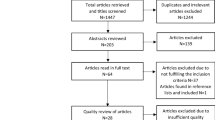Abstract
This study explored needs of homeless children and shelter services available to them. The first phase of this mixed-method study consisted of open-ended interviews of key personnel in six diverse homeless shelters in metropolitan Atlanta, Georgia. This qualitative data gave direction to the creation of a questionnaire used in a larger follow-up survey of shelters in the state of Georgia. Roughly two-thirds of the 102 reporting shelters that served children provided food, clothing, and school supplies with 40% offering some form of transportation. More than 75% of the shelters were full and did not have space currently available for children, with an additional 10% having only one or two available beds. Most of the shelters lacked important services in the areas of medical and developmental assessments, access to education, childcare, and parent training. Forty-seven percent lacked onsite worker training in the characteristics and needs of homeless children. In addition, while the McKinney Act legally mandates ways to serve homeless children, findings indicate that over half of key informants in homeless shelters were unfamiliar with the law.
Similar content being viewed by others
References
Bassuk, E. L. & Rosenberg, L. (1990). Psychosocial characteristics of homeless children and children with homes. Pediatrics, 85, 257-261.
Bassuk, E. L., Weinreb, I., Dawson, R., Perloff, J. N., & Buckner, J. C. (1997). Determinants of behavior in homeless and low-income housed preschool children. Pediatrics, 100, 92-100.
Educating homeless children. House education and the workforce congressional testimony. 106th Congress, 2d Sess., (2000). (Testimony of Lisa Keegan.) Washington, DC: eMedia MillWorks.
Egan, J. (March 24, 2002). The hidden lives of homeless children. The New York Times Magazine, Section 6, 32-37.
Foscarinis, M. & McCarthy, S. (2000). Educating homeless children: Promising practices. Newbury Park, CA: Sage.
Freeman, L. (2002). America's affordable housing crisis: A contract unfulfilled. American Journal of Public Health, 92, 709-714.
Georgia Coalition to End Homelessness. (2002). Homeless data. Unpublished document.
Glasser, Irene. (1994). Homelessness in global perspective. New York: Macmillan.
Harms, T., Ray, A. R., & Rolandelli, P. (Eds.). (1998). Preserving childhood for children in shelters. Washington, DC. Child Welfare League of America.
Hicks-Coolick, A. & Kurtz, P. D. (1997). Preparing students with learning disabilities for success in postsecondary education: Needs and services. Social Work in Education, 19, 31-42.
Karger, H. & Stoesz, D. (1998). American social welfare policy: A pluralist approach. (3rd ed.). New York: Longman.
Letiecq, B. L., Anderson, E. A., & Koblinsky, S. A. (1998). The social support of homeless and housed mothers: A comparison of temporary and permanent housing arrangements. Family Relations, 47, 415-422.
McCarthy, S. (2000). Separate and unequal: a report on educational barriers for homeless children and youth. Washington, DC: National Law Center on Homelessness and Poverty.
The McKinney Act (1987, July). 42 U.S.C.A. §11301 et seq. [online]. Retrieved from http://www.nlchp.org on April 19, 2002.
National Coalition for the Homeless. (2002a). NCH fact sheet # 1: Why people are homeless. Washington, DC. [online] Retrieved from http://www.nationalhomeless.org February 16, 2003.
National Coalition for the Homeless. (2002b). NCH fact sheet # 2: How many people experience homelessness? Washington, DC. [online] Retrieved from http://www. nationalhomeless.org/numbershtml February 16, 2003.
National Law Center on Homelessness and Poverty (1997). Blocks to their future: A report on the barriers to preschool education for homeless children. [online]. Retrieved from http://www.nlchp.org on April 19, 2002.
National Low Income Housing Coalition (NLIHC) (2003). 2002 Advocates' Guide To Housing and Community Development Policy [online] Retrieved from http://www. nlihc.org/advocates/homeless.htm on February 15, 2003.
Nunez, R. & Fox, C. (1999). A snapshot of homeless across America. Political Science Quarterly, 114, 289-307.
O'Sullivan, E. & Rassel, G. (1999). Research methods for public administrators, (3 rd ed). New York: Longman.
Patton, M. Q. (1990). Qualitative evaluation and research methods. Newbury Park. CA: Sage Publications.
Rabideau, J. M., & Toro, P. A. (1997). Social and environmental predictors of adjustment in homeless children. In E. M. Smith & J. R. Ferrari (Eds.). Diversity within the homeless population: Implications for intervention (pp. 1-17). Binghamton, NY: Haworth Press.
Rafferty, Y. (1999). Legal issues in educating homeless children: Past accomplishments and future challenges. Journal for a Just and Caring Education, 5, 19-33.
Save the Children. (2003). United Nations convention on the rights of children. Retrieved from http://www.savethechildren.ca/en/whoweare/whounrights.html on January 6, 2003.
Shane, P. (1996). What about America's homeless children? Thousand Oaks, CA: Sage.
Strong, J. (2000). Educating homeless children and adolescents. (2nd ed.). Newbury Park, CA: Sage.
Tashakkori, A. & Teddie, C. (1998). Mixed method: Combining quantitative and qualitative approaches. In L. Bickman & D. Rog (Eds.) Applied social science research methods series (Vol. 46). Thousand Oaks, CA: Sage.
U. S. Conference of Mayors (2001). A status report on hunger and homelessness in America's cities. Washington, DC. [online] retrieved from http://www.usmayors.org/ uscm/hungersurvey/2001/onlinereport/homelessness.pdf on April 21, 2002.
The Urban Institute. (Feb. 1, 2000). A new look at homelessness in America. Washington, DC http://www.urban.org
Youngblade, L. M. & Mulvihill, B. A. (1998). Individual differences in homeless preschoolers' social behavior. Journal of Applied Developmental Psychology, 19, 593-614.
Zima, B. T., Bussing, R. Bystritsky, M. Widawski, M. H., Belin, T. R., & Benjamin, B. (1999). Psychosocial stressors among homeless children: Relationship to behavioral and depressive symptoms. American Journal of Orthopsychiatry, 69, 127-13.
Author information
Authors and Affiliations
Corresponding author
Rights and permissions
About this article
Cite this article
Hicks-Coolick, A., Burnside-Eaton, P. & Peters, A. Homeless Children: Needs and Services. Child & Youth Care Forum 32, 197–210 (2003). https://doi.org/10.1023/A:1024112015196
Issue Date:
DOI: https://doi.org/10.1023/A:1024112015196



